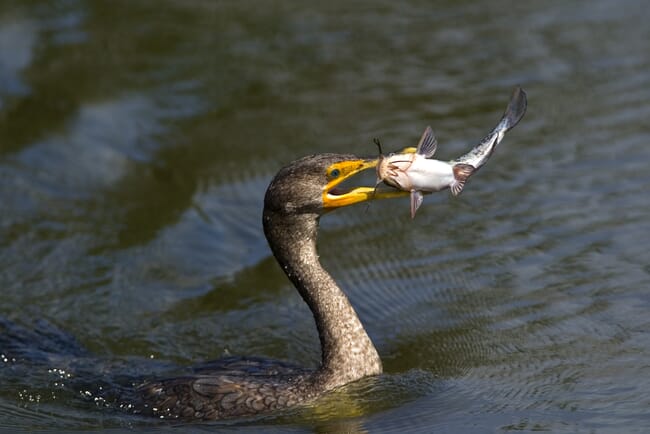Possible solutions to improve the management of the European cormorant population were presented during a conference held in the European Parliament in Brussels. The panel speakers provided evidence to demonstrate that a European-wide management plan is needed to tackle the issue of the cormorant’s threat to vulnerable fish species and biodiversity.

The event, entitled Cormorant: management needed across the borders, chaired by MEP Annie Schreijer-Pierik and MEP Werner Kuhn, took place on 9 October and was organised by the Forum on Recreational Fisheries and Aquatic Environment, supported by the European Anglers Alliance (EAA) and the European Fishing Tackle Trade Association (EFTTA).
The cormorant is a naturally-occurring bird species in Europe but the population has greatly increased since the 1980s. The birds’ appetite for fish represents a problem to endangered fish populations in freshwater habitats and is a threat to vulnerable fish species. For the time being cormorants are managed at the local level, often by scaring away the bird. However, according to the event’s participants, moving this highly migratory species merely creates problems in other places and therefore cross-border cooperation is needed.
Niels Jepsen, Senior Researcher at the National Institute of Aquatic Resources of Denmark (DTU Aqua) provided facts about cormorant predation effects on some wild fish populations, with an impact on commercial- and recreational fisheries and biodiversity. He said that there are increasing difficulties in Denmark to fulfil the obligations in the Water Framework Directive due to failure on the requirement of healthy fish populations. He also provided evidence that the cormorants in the Nordic countries have negatively affected fish stock along the coasts and in the freshwaters - with documented impacts on eelpout, cod, flounders, eel, salmon and grayling.
According to the EAA and the EFTTA, it is necessary to look at the cormorant issue from a European perspective. In their presentations, Olaf Linder, from the Deutscher Angelfischerverband (EAA member) and Markus Lundgren from SportFiskarna (EAA member) stressed the need to ensure a good balance between protection of fish, birds, biodiversity and fisheries. The cormorant must maintain its current ‘favourable conservation status’ as prescribed by the Birds Directive, but weak fish stocks and threatened fish species need protection, too. Therefore, the EAA and the EFTTA call for the development of a pan-European management plan – as the European Parliament did ten years ago.
The event was concluded by a lively debate - moderated by MEP Werner Kuhn – which involved MEPs, representatives of Member States, European Commission, environmental NGOs, the Federation of European Aquaculture Producers (FEAP) and the European Federation for Hunting and Conservation (FACE).


